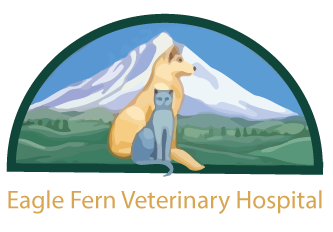 Physical Rehabilitation Physical Rehabilitation
Physical rehabilitation is improving the outcome in dogs with orthopedic problems. It often helps patients achieve maximum recovery after an orthopedic surgery as well as is valuable for easing chronic pain. The benefits of physical rehabilitation are multifaceted and can include pain relief, decreased inflammation and swelling, increased flexibility, strengthening, improved balance, improved weight bearing, psychological benefits weight loss and improved cardiovascular and respiratory fitness.
Since pain is one of the primary factors limiting mobility, it is paramount that it be eliminated or minimized. Both post-operative patients and chronic arthritis patients benefit from pain control. Non-steroidal anti-inflammatory drugs and opioids are often used to provide pain control. Physical therapy can actually lower the dose or frequency of medication needed to control pain.
Cold therapy is an excellent method to help control pain and inflammation in the immediate post-operative and post-injury period. It is also beneficial after exercise and throughout rehabilitation when inflammation occurs. The simplest way to use cold therapy is by placing crushed ice in a sealed plastic bag and then wrapping the bag in a thin cloth such as a towel. Apply the cold pack for 15-20 minutes 3-4 times per day for the first 3-4 days after surgery or injury. Monitor the pet for discomfort and assess the tissues periodically for problems such as white or pale areas.
Heat therapy is initiated 2 weeks after surgery or injury. Do not apply heat in the early inflammatory phase of healing because swelling may worsen resulting in further tissue damage. Commercially available hot packs are generally used and may be heated in a microwave until they are warm to the touch. Alternatively, you can make a microwave hot pack by placing rice in a sock and knotting it closed. Test that the pack is not too hot by placing it on the back of your neck. Use a blanket or towel as an insulating layer between the patient's skin and the heat source to prevent burns.
Range of motion and stretching exercises are vital activities to help improve joint motion and flexibility in pets after surgery or in patients with chronic orthopedic conditions. When performing range of motion exercises, make sure to have the pet in a quiet environment with minimal external stimuli. Use adequate support and padding to ensure patient comfort. Lightly stroke and massage the limb to be manipulated for a few minutes before range of motion exercise. The joint motion should be smooth and controlled, with steady motion through a comfortable range of extension and flexion. Ideally, the range of motion should involve only one joint at a time while the other joints assume a neutral position. The movements should start small and increase until the endpoint of the range of motion is reached and the patient appears to slightly resist, indicated by tensing its limb muscles or turning its head toward the therapist to indicate early discomfort. Fifteen to 20 repetitions performed two to four times a day is likely sufficient. If you use true stretching, take the joint slightly beyond comfortable flexion, and hold it for at least 15 to 30 seconds. Improvements achieved with range of motion exercises will be slow and gradual. Safety is important, and it is recommended to have a handler restrain the pet during the initial sessions.
Exercise balls are excellent for general stretching and to challenge pet's balancing abilities by rolling the ball back and forth. When straddling the ball, the animal should be able to touch the ground with all four feet. The ball can be partially deflated to provide added stability. Slow movements and patient manipulation encourages limb use and joint motion. Weight and balance can be shifted to the hind limbs by elevating the forelimbs. Pets may initially be placed on the ball for two to five minutes; as strength and stamina improve, the length of time may be increased up to 10 to 15 minutes depending on the individual patient.
The main exercise for most pets in the early rehabilitation period is slow, short controlled leash walks in which the pet is encouraged to achieve the most normal gait possible and use the affected limb to the best of its ability. Unfortunately, this exercise is often performed incorrectly; if a pet is led too quickly, the pet tends to skip with the affected limb or not use the limb at all. Slow walks increase stance time, flexibility, strength, and weight-bearing. Walking on inclines provides a low impact method to strengthen the muscles of the hind limbs. It is best to start with small hills and progress as the pet is able.
Other rehabilitation modalities include treadmill walking, dancing, wheel barrowing, jogging, stepping over rails, pulling or carrying weights, and aquatic therapy. A thorough exam is always recommended so the best protocol can be utilized and so injury is not caused by an incorrect treatment.
| 
